Written on: December 1, 2014 by SprayTM
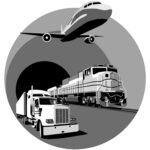
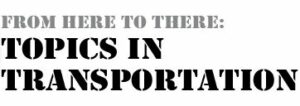
Shortly after I drafted last month’s article, Limited Quantities—Size Matters, I received a phone call from a very large cosmetic manufacturer in Los Angeles, CA. Even though this company ships hundreds of millions of dollars in freight annually, they were having issues with their carriers with respect to the placarding of freight containers that were being drayed to the port for carriage aboard cargo ships bound for various international destinations.
After a lengthy interview with the International Logistics Coordinator, it appears that the carrier was charging the manufacturer exorbitant freight surcharges because of the carrier’s misconception that the container was required to be “placarded” with the hollow diamond with black points.
Limited Quantities
As I stated in last month’s article, a “…limited quantity of a hazardous material means the maximum amount of a hazardous material for which there is a specific labeling or packaging exception. Whether or not a hazardous material may be shipped as a limited quantity is dependent upon the following factors: (a) the hazard class and division for the substance or article; (b) the size of the inner receptacle; and (c) the total gross mass of the completed package…
“There are also certain economic advantages to shipping a hazardous material as a limited quantity, including reduced hazard communication requirements for surface and ocean transport, and an exception from the shipping paper requirements for surface transport. Additionally, many carriers have reduced shipping rates or surcharges for limited quantities compared to fully-regulated dangerous goods shipments.”
Obviously, in this case, the carrier, as well-intentioned as it might be, is apparently charging the manufacturer costly hazardous materials surcharges because they dispatch only drivers that have a Hazardous Materials Endorsement to the Commercial Drivers’ License (CDL).
Nomenclature
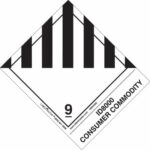
Hazard warning label
Although the enlarged Limited Quantity Marking applied to the four sides of an intermodal freight container have dimensions identical to the hazard-warning placards applied for international ocean shipments (250 mm x 250 mm), the Limited Quantity Marking is not a “placard” as most people erroneously assume.
The U.S. Dept. of Transportation (DOT) has a number of “reserved” terms including “labels,” “placards,” “markings,” “marks” and “panels,” all of which help to communicate the risks associated with dangerous goods.

Cargo handling label
The term “labels” refers to the hazard warning signs applied to packages of hazardous materials such as drums, boxes, bags and cylinders. “Labels” can also mean “cargo handling labels,” such as the orientation arrows that indicate that liquids are contained within a combination packaging and should be stored and handled in an upright position. Labels are typically 100mm x100 mm and applied to a package in a diamond (or square-on-point) configuration. Interestingly enough, there is no regulatory requirement in the U.S. that the hazard warning labels be applied to a package in a diamond configuration; this is another common misconception. However, there is such a regulatory requirement in Canada.
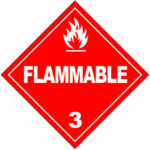
Placard
“Placards” are “enlarged labels” applied to cargo transport units e.g., freight containers, cargo tanks, rail cars, trailers and bulk packaging (such as ISO tank containers, Intermediate Bulk Containers, “totes” and “supersacks”). Unlike labels, placards must be applied to the exterior surfaces of the cargo transport unit or bulk packaging in a diamond (or square-on-point) configuration and in such a manner to promote visibility, e.g., at least five feet in from the corner post and five feet up from the bottom rail of an intermodal freight container.
A “mark” or “marking” is neither a label nor a placard but rather another form used to communicate special warnings or information associated with the products being carried. The term “mark” or “marking” may refer to a UN specification packaging marking or DOT mark applied to drums (e.g., 1A1), cylinders (e.g., DOT-39 NRC), boxes (e.g., 4GY) or even aerosol cans (e.g., 2P, 2Q, 2S). A “marking” can also refer to a fumigation warning applied to freight containers that are being carried while actively under fumigation, or a marine pollutant mark applied to indicate that cargo is particularly hazardous to the aquatic environment.
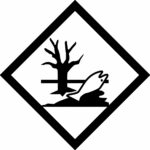
Marine Pollutant Marking
“Panels” are orange rectangles with a thick black border into which you apply the 4 digits of the UN or NA identification number, and which are applied to bulk packaging or cargo transport units carrying bulk quantities or certain threshold amounts of dangerous goods.
A Limited Quantity marking is a symbol, applied to packages in a square or diamond (preferred by DOT, however required internationally) configuration. It is used to indicate that the products within the combination packaging are dangerous goods that are packaged in a form that is suitable or intended for retail distribution and that have a lesser risk than fully regulated products and quantities of the same substance.

Panel signifying UN 1993
The “enlarged” limited quantity marking may be applied to cargo transport units—such as trailers or freight containers—by surface, but are required when freight containers are interchanged at the marine terminal for lifting onto the cargo ship. The “enlarged” limited quantity marking is applied to each of the four visible sides of the freight container in the same manner as placards; however, the Limited Quantity Marking on a freight container means that all of the dangerous goods within the container (regardless of cubic volume) are in limited quantities. It is important to note that it doesn’t matter how many pallets of limited quantities may be shipped in a freight container—it may be one pallet or 20, up to the maximum allowable payload for the freight container. If any amount of the cargo within the freight container requires hazard warning labels, then the “enlarged” limited quantity markings would not apply to the freight container, but rather the freight container must be placarded on the four visible sides for the cargo requiring the hazard warning labels. In a sense, you would never have a situation where the hazard warning placard and limited quantity marking would appear on a freight container at the same time.
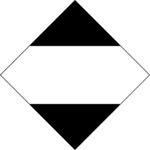
Limited quantity marking
For example, a typical 20″ closed freight container can carry up to 30 cubic meters (or 20 pallets that are five deep, two wide, two high). Let’s assume, in this case that three pallets contain 100 boxes, each containing twelve 16.9oz (500 mL) flammable aerosols. The remaining 17 pallets do not contain hazardous materials of any type. The Limited Quantity Marking would be applied to each of the four visible sides of the freight container.
However, if I have three pallets of the flammable aerosols previously described, have 16 pallets of non-dangerous goods, and add one pallet containing 27 five-gallon pails of a solvent-based (flammable liquid) paint, the freight container no longer contains dangerous goods that are only in limited quantities. Therefore, it must be placarded on all four sides with the Flammable Placard and the Limited Quantity Marking would not apply.
Hazardous Materials Endorsements
The U.S. Federal Motor Carrier Safety Administration (FMCSA) is the regulatory agency that develops and enforces the requirements for licensing and qualification of drivers, maintenance and inspection of vehicles, carrier safety and fitness, drug and alcohol testing, and drivers’ hours of service. FMCSA is not the regulatory agency that develops the DOT’s Hazardous Materials Regulations (HMR). The HMR is developed by the U.S. Pipeline & Hazardous Materials Safety Administration (PHMSA, pronounced fim-zuh). The DOT’s modal agencies (e.g., Federal Aviation Administration, Federal Railroad Administration, Federal Highway Administration, FMCSA) are the DOT’s enforcement arms for their respective modes of transportation. PHMSA generally enforces the requirements for packaging marking, manufacturing and design, even though each modal agency can equally enforce these requirements.
FMCSA requires, under Title 49, Code of Federal Regulations (49 CFR), 383.93(b) that “…an operator must obtain State-issued endorsements to his/her CDL to operate commercial motor vehicles which are:
CFR defines a “hazardous material” as “any material that has been designated as hazardous under 49 U.S.C. 5103 and is required to be placarded under subpart F of 49 CFR part 172 or any quantity of a material listed as a select agent or toxin in 42 CFR part 73.”
A quick search of the placarding requirements in 49 CFR Part 172, subpart F, §172.500 reveals that the “placarding” requirements do not apply to limited quantities and Consumer Commodities. See below:
§172.500 Applicability of placarding requirements